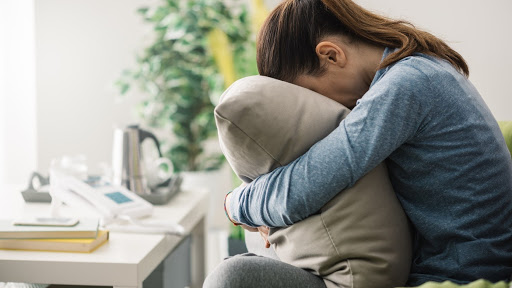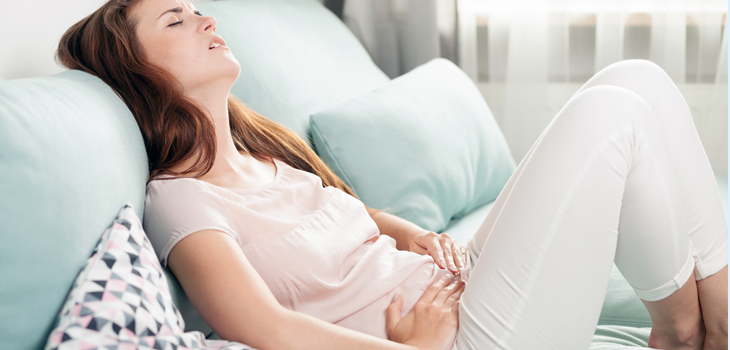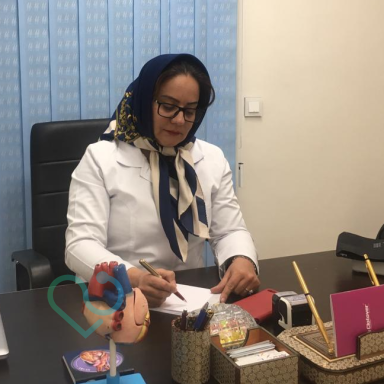Premenstrual Syndrome (PMS)
Premenstrual Syndrome (PMS) is a condition that affects a woman's emotions, physical health, and behavior during certain days of the menstrual cycle. PMS is very common, with symptoms affecting over 90% of women, but it is typically diagnosed after worsening symptoms by a doctor. PMS symptoms start 5 to 11 days before menstruation and usually disappear with the start of the period. The cause of PMS is unknown, however, many researchers believe it is related to changes in sexual hormone levels as well as serotonin early in the menstrual cycle. Estrogen and progesterone levels increase in some months, and this increase can cause mood swings, anxiety, and irritability. Ovarian steroids modulate parts of the brain associated with premenstrual symptoms. Serotonin is a chemical in the brain and gut that affects mood, feelings, and thoughts.

What Are the Risk Factors for Premenstrual Syndrome?
- History of depression or mood disorders, such as postpartum depression or bipolar disorder (read more here)
- Family history of PMS
- Family history of depression
- Family violence
- Substance abuse
- Physical injury
- Emotional problems
- Having symptoms like the following:
- Depressive disorder
- Seasonal affective disorder
- Anxiety disorder
- Psychosis
Symptoms of Premenstrual Syndrome (PMS)
The average menstrual cycle of women lasts 28 days. Ovulation, the release of an egg from the ovaries, occurs on the 14th day of the cycle, and menstruation happens on the 28th day. PMS symptoms may start around day 14 and last up to seven days after the start of menstruation. These symptoms can range from mild to moderate.
In approximately 80% of women, one or more of these symptoms are observed, but they do not significantly impact daily functioning. In contrast, 20% to 32% of women report moderate to severe symptoms that affect certain aspects of life. 3% to 8% of women report severe symptoms, and the intensity of symptoms can vary from one person to another and from month to month.
Symptoms of Premenstrual Syndrome (PMS) include:
Bloating, stomach pain, tender breasts, acne, food cravings, especially for sweets, constipation, diarrhea, headaches, sensitivity to light or sound, fatigue, irritability, changes in sleep patterns, anxiety, depression, discomfort, and emotional problems.
When to See a Doctor?
If physical pain, mood changes, and other symptoms impact daily life or if symptoms are bothersome, it is better to consult a doctor. In such cases, the doctor should check for other causes such as anemia, endometriosis, thyroid disease, irritable bowel syndrome (IBS), chronic fatigue syndrome, and the presence of rheumatologic diseases.
The doctor may conduct thyroid hormone tests to ensure the thyroid gland is functioning correctly, a pregnancy test, and possibly a pelvic examination to check for any gynecological or obstetric issues.
Keeping track of symptoms is one way to diagnose Premenstrual Syndrome. Use a calendar to track your symptoms each month. If symptoms start at nearly the same time every month, PMS is likely the cause.
Relieving Premenstrual Syndrome Symptoms
You cannot cure PMS, but you can alleviate its unpleasant symptoms.
- Drink plenty of fluids to ease bloating, follow a balanced diet to improve overall health and energy levels, which means eating plenty of fruits and vegetables and reducing the intake of sugar, salt, caffeine, and alcohol.
- Take supplements like folic acid, vitamin B-6, calcium, and magnesium to relieve cramps and mood swings.
- Take vitamin D to reduce symptoms.
- Get at least eight hours of sleep each night to reduce fatigue.
- Exercise to reduce bloating and improve mental health.
- Reduce stress with exercise and reading.
- Use behavioral therapy.
For muscle pain, headaches, and abdominal pain, you can use pain-relieving medications like ibuprofen or aspirin. Using a diuretic and drinking water afterward can help prevent bloating. However, medications and supplements should only be taken as directed by a doctor or after consulting with one.

Severe PMS: Premenstrual Dysphoric Disorder (PMDD)
Severe PMS symptoms are rare, and a small percentage of women experience severe PMS or Premenstrual Dysphoric Disorder (PMDD). PMDD affects 3% to 8% of women, and its symptoms may include:
- Depression
- Suicidal thoughts
- Panick attacks
- Severe anxiety
- Anger with severe mood swings
- Severe, sudden crying
- Lack of interest in daily activities
- Insomnia
- Difficulty thinking or concentrating
- Overeating
- Painful cramps
- Bloating
PMDD symptoms may occur due to changes in estrogen and progesterone levels. A low serotonin level may also influence PMDD. The doctor may also examine liver function for diagnosis. A referral to a psychiatrist may also be suggested. A history of depression (personal or family), substance abuse, physical injury, and stress can trigger or worsen PMDD symptoms.
The treatment of PMDD varies, and the doctor may recommend the following:
- Daily exercise
- Supplements like calcium, magnesium, and vitamin B-6
- Caffeine-free diet
- Counseling
- Stress management classes
- The pill drospirenone and ethinyl estradiol, which is the only birth control pill approved by the FDA for treating PMDD symptoms.
If PMDD symptoms do not improve, the doctor may prescribe antidepressants (SSRI) that enhance serotonin absorption. These medications increase serotonin levels in the brain and play an essential role in regulating brain chemistry, which is not limited to depression. The doctor may also recommend behavioral therapy, a form of counseling that helps understand thoughts and feelings, leading to behavior changes.
Although PMS or PMDD symptoms cannot be prevented, the treatments mentioned can help reduce the severity and duration of the symptoms. These symptoms may recur but typically disappear once menstruation starts. A healthy lifestyle and a comprehensive treatment plan can reduce or eliminate symptoms for most women.












Our Customers' Comments
No comments registered